Rumble Pie #25
Lawn Furniture
AFTER FINISHING A THREE-ARTICLE focus on cob construction -- building houses, other structures, and furniture out of earth -- I began thinking about sod. Cottages are a literal scaping of the land into human habitation, terraforming the very earth into shelters; sod has been used for some of the same purposes here ion North America. The difference between the two is that cob is dry straw mixed into sub-soil, while sod is the first few inches of the topsoil, which contains the rhizomatic roots of the living grass that grows on top of it. So if we can include cob objects in our landscape designs, what's possible in the way of sod structures?
FIRST OF ALL, THERE'S TOPIARY, the calculated pruning of small trees and shrubs to create mathematical patterns or life-size sculptures. Evergreen trees with dense foliage and small needles, like holly and myrtle, are trimmed from infancy in order to create the illusion of a solid object that resembles its real-world counterpart. Sometimes a number of plants are pleached together to form one large object out of several smaller shrubs. In other cases, the plants are grown out of a wire mesh that has been bent into the desire shape, or some other pre-existing endo-skeletal structure. The results can be cute, or considered kitsch.


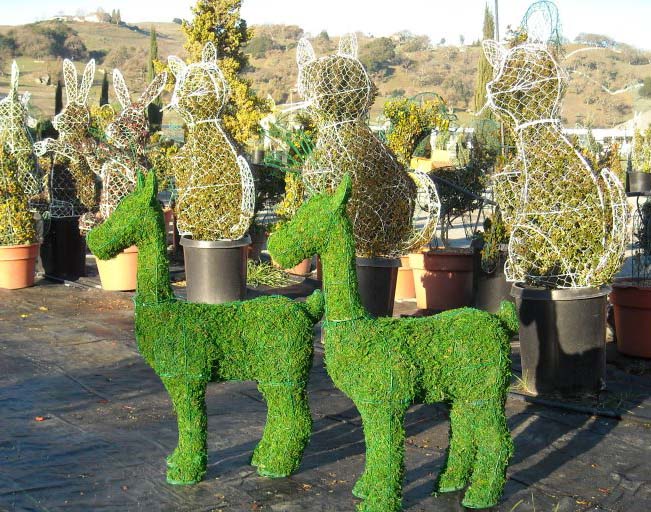
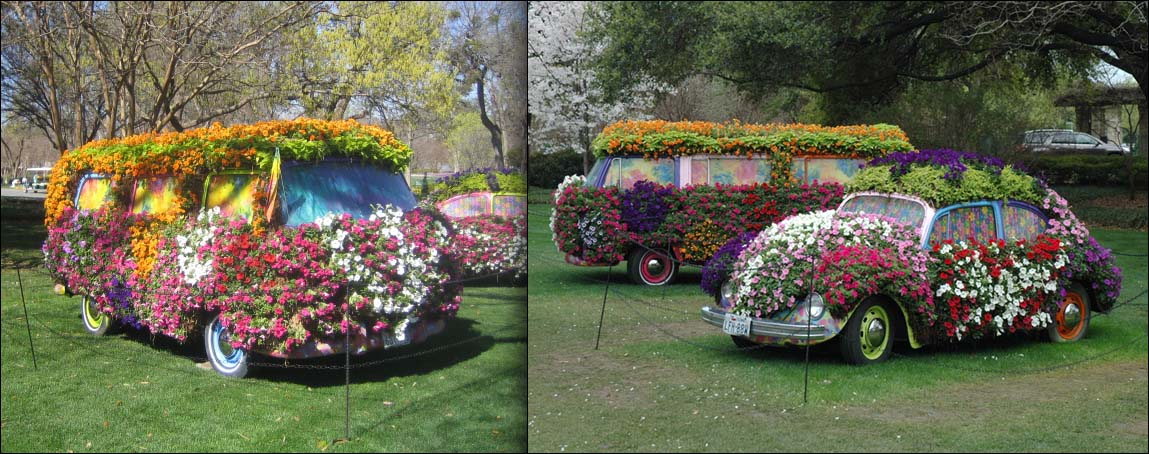
NOW DID YOU KNOW that European settlers in the midwestern states and the prairie provinces once built houses out of sod? Yes, here is a photo from just over a hundred years ago, taken in Saskatchewan, of a family of farmers in front of their humble home. Obviously, there was no color photography at that time, the image has since been computer-colourized. But it is otherwise an authentic artifact, recorded proof that some of the first New Canadians fashioned for themselves houses out of sod, complete with green roof growing on top. They probably had the lowest possible carbon footprint out of any permanent dwelling, ever!
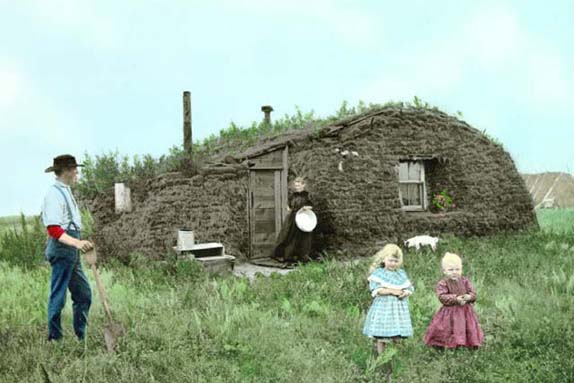
SINCE AT LEAST 1996, people in Portland have been building cob couches and other sculptures out of earth. And it turns out that in the UK, the same is true for sod. At the Lost Gardens of Heligan in Cornwall, earth artists have invoked the green gods, nephilim made from mud. Mounds of earth covered in various grasses to effect different textures, the Giant's Head and the Mud Maidens guard the land and instill a sense of awe. And over at the Eden Project, the world largest greenhouse (also in Cornwall), sod sculptors Sue and Pete Hill raised another majestic Moss Maiden from the ground, this one sitting straight up. Beautiful!
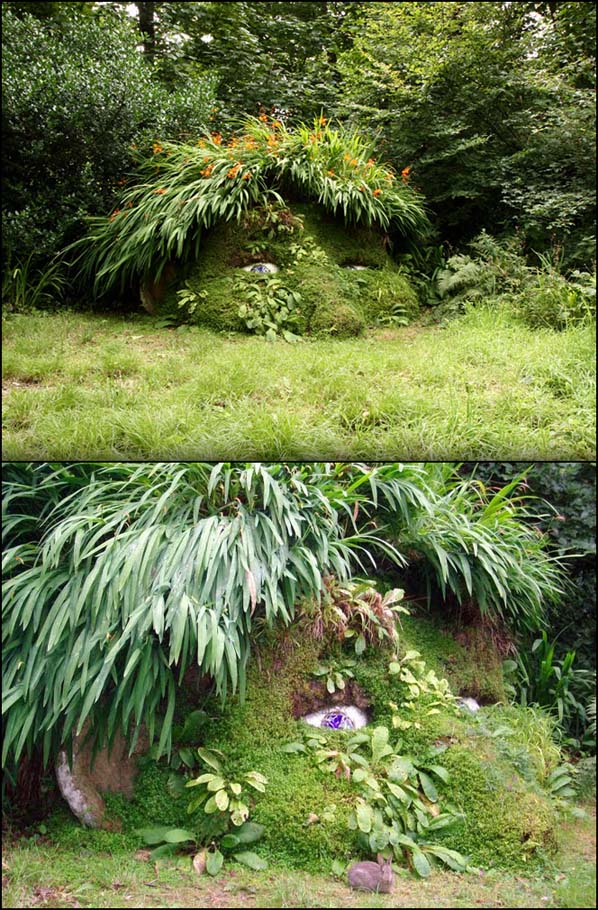
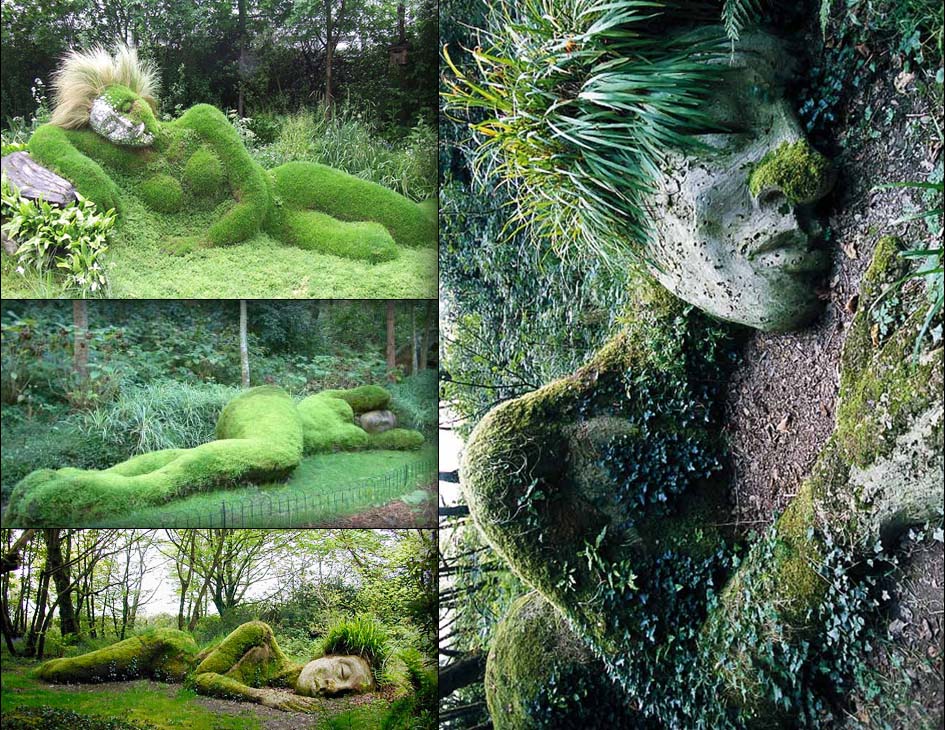
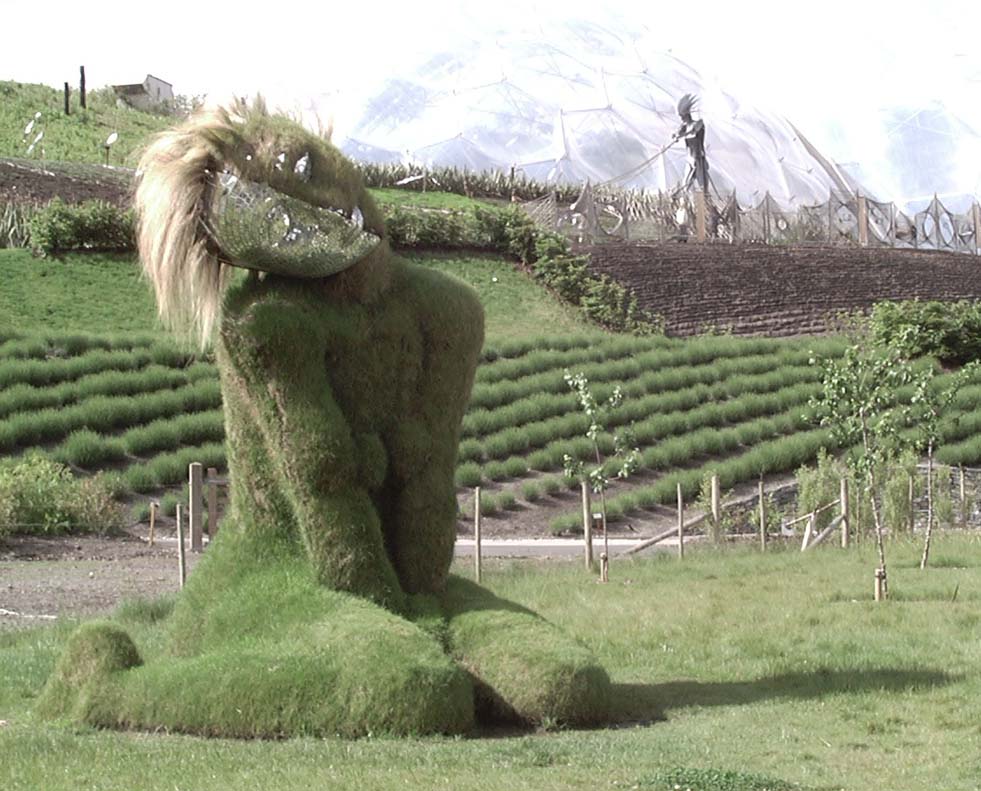
NOW ARCHITECT-ARTIST GREG TATE out in Orange County, California has taken the concept of sod sculpture and has placed function over form, creating sod sofas! He came up with the idea of sprouting a couch, creating literal lawn furniture! And he's been kind enough to share his idea with the world, publishing instructions for how to make a D-I-Y couch that's covered in clover. It's pretty simple: basically, just use temporary forms, pack the mud into whatever shape you want, then cover it in chicken wire and rolls of sod. How easy is that? It may seem a little cheesy, but I still want to build one, it looks like tonnes of fun! Could you imagine one of these in your own yard?
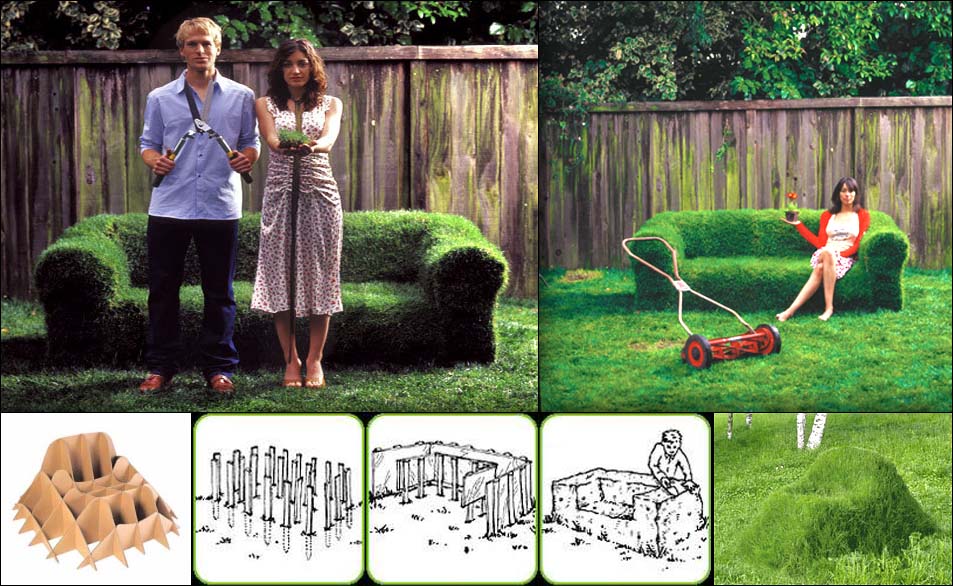
- Figure the dirt you need by multiplying the dimensions of the couch you plan to make (Height x Width x Depth = Volume of Earth).
- Next, locate a suitable spot. Placement is key: There'll be no moving once you've begun. Clear the area of grass and weeds until you have a level swath of dirt, then use a stick to sketch the shape of the couch into the dirt with a stick.
- Drive the wood stakes into the ground along the perimeter of your sofa-shaped sketch, every 18" or so, to a depth of about 12". These will secure the form.
- Attach the waferboard to the stakes to create the walls of the form (see illustration). Use a handsaw to trim the waferboard to size. Drive in a nail every 4" along each stake to secure the boards.
- Start shoveling dirt into the form. Here's where things get messy. Once a foot of dirt is in place, water lightly and compress by stomping around on top of it.
- Once the basic shape is in place and secure, carefully remove the form works.
- Mold the shape to your liking. Remove any loose debris and sprinkle the sofa and other areas you'll be sodding with a healthy layer of fertilizer and gypsite. Water lightly.
- For extra support, lay strips of poultry netting over the arms and back.
- Lay the sod. Press down the edges to create a smooth surface clear to the ground. Stagger the rows so the seams don't fall in a line, and use chopsticks or planting stakes to keep them in place over the wire.
- During the next few weeks, water your sofa often, soaking it thoroughly. Once the sod has taken root, remove the chopsticks or planting stakes. Trim as needed.
|

